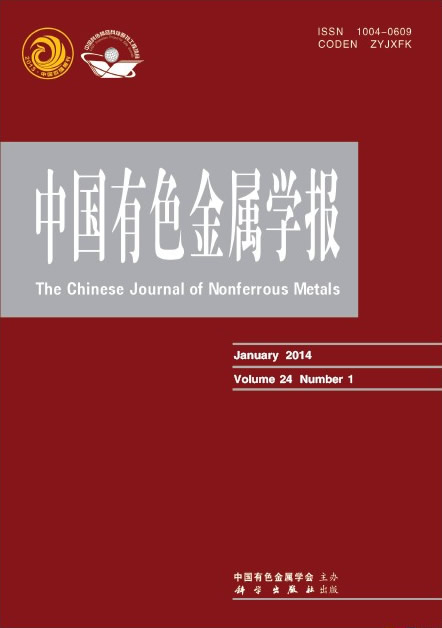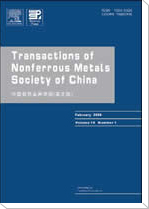(中南大学 粉末冶金国家重点实验室,长沙 410083)
摘 要: 以0.675PMN-0.325PT反应原料为基体,<001>取向的片状SrTiO3为模板,利用模板晶粒生长技术在较低的温度下制备出具有一定取向度的0.675PMN-0.325PT多晶织构陶瓷。研究了烧结过程中基体晶粒自身长大和模板外延生长情况以及PbO添加量对织构组织形成的影响。结果表明:增加PbO含量可加快基体晶粒溶解−析出过程,促进基体晶粒的长大;同时液相含量的增加还有利于模板的外延生长以及织构组织的形成;与以PMNT为基体相比,以反应原料为基体可大幅度降低烧结温度;添加3%过量PbO后,在1 000 ℃保温2 h后即可获得取向度为40%的PMN-PT多晶织构陶瓷。
关键字: PbO;0.675PMN-0.325PT;TGG法;多晶织构陶瓷
(State Key laboratory of Powder Metallurgy, Central South University, Changsha 410083, China)
Abstract:Textured 0.675PMN-0.325PT polycrystalline ceramics with certain orientation degree were prepared using mixed oxide powders 0.675PMN-0.325PT as matrix and <001> tabular SrTiO3 as templates at relative low temperatures by templated grain growth technique. The effects of self-growth of matrix grains during sintering process, epitaxial growth of templates and excess PbO on texture formation were also studied. The results show that the increase of excess PbO can accelerate the dissolution-precipitation process of the matrix, and then improve the matrix grains growth. Meanwhile, the increase of liquid content also can promote both epitaxial growth of template and formation of textures. The sintering temperatures when reactive material used as matrix are much lower than those when PMNT used as matrix. Holding at 1 000 ℃ for 2 h, the textured PMN-PT ceramic with orientation degree of 40% are obtained after adding 3% excess PbO.
Key words: PbO; textured 0.675PMN-0.325PT; TGG method; polycrystalline texture ceramic


